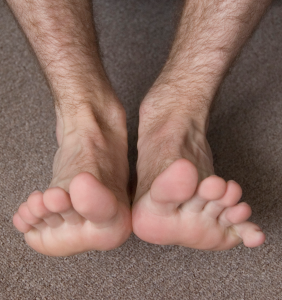Foot Care and Diabetes

Foot Care and Diabetes

Foot care is extremely important for people with diabetes. Ulcers and infections are very common and if left untreated can lead to serious complications. To help you avoid these nasty problems, here are some simple tips to keep your feet in great shape.
- See a podiatrist. A must for all diabetics, a podiatrist can take care of your toenails (ingrown toenails can lead to painful infections), blisters, calluses, corns, bunions and any injuries or trauma to your feet.
- Visit your doctor or podiatrist if you experience any problems with your feet such as unexplained pain, or if you are unable to feel heat, cold, sharpness or pressure. All of these could be a symptom of poor circulation – an enemy to all diabetics.
- Regularly check your feet so that you are familiar with how they look and feel. This way you will know if something is wrong and you can seek advice and treatment immediately.
- Assess if your feet are low risk or high risk in terms of complications. If your feet have good blood flow, circulation and normal sensation to pressure, sharpness, heat and cold, then your feet are low risk – perfect! If the opposite is true, you have high risk feet that can benefit from some professional TLC.
- Wash your feet daily in warm water and dry them thoroughly, especially between your toes. Feet are a breeding ground for fungal infections such tinea (athlete’s foot).
- Feet love to be hydrated. Moisturizer is a great way to protect your heels and the balls of your feet from cracking and developing calluses, corns and/or bunions. Just remember to stay away from your toes! Also, massaging moisturizer into your feet is a wonderful way to indulge in a little relaxation.
- Always, always wear properly fitting shoes. Get your shoes fitted each time you buy a new pair instead of just buying your regular size. Where possible, try to avoid high heels if you can. Not only do they hurt your feet but they put you at risk of ankle injuries, and have a negative effect on your posture and lower back if you wear them too often.
- Exercise is an important part of diabetes management so it makes sense to choose the appropriate shoes for the types of exercise you enjoy. Talk to your podiatrists and local shoe/sports store for advice on the right type of shoe for your favorite exercise.
- If you are breaking in new shoes, alternate them with a pair of old shoes to reduce your risk of blisters, corns and calluses.
- Wear natural fiber socks such as cotton, wool or bamboo or a combination of these. Natural fibers allow feet to breathe and help absorb sweat, which reduces the likelihood of a fungal infection. Also try to make sure your socks aren’t too tight at the tops and try to avoid knee high socks. Both of these can reduce circulation to your feet and this is definitely something you don’t want to happen.
- Treat blisters, calluses and corns as soon as they occur. Speak to your podiatrist about treatment options, what you can do at home to help, and keep a supply of blister blocks on hand – just in case.
- Regularly check your feet for cuts or broken skin as this is a breeding ground for infection. If there is any area on your feet that is showing signs of infection (i.e. red, swollen, hot, painful to touch), see a health professional as soon as you can. Infections can reduce blood flow, circulation, and the healing process – all very dangerous for a diabetic.
As with many aspects of your diabetes management, foot care should be part of your daily and/or weekly routine. Healthy feet with good circulation will (if you pardon the pun) stand you in good stead for the future.
Reference:
2001 Lions E. DAV-Ballarat Branch: Diabetes Walking Group Manual.

